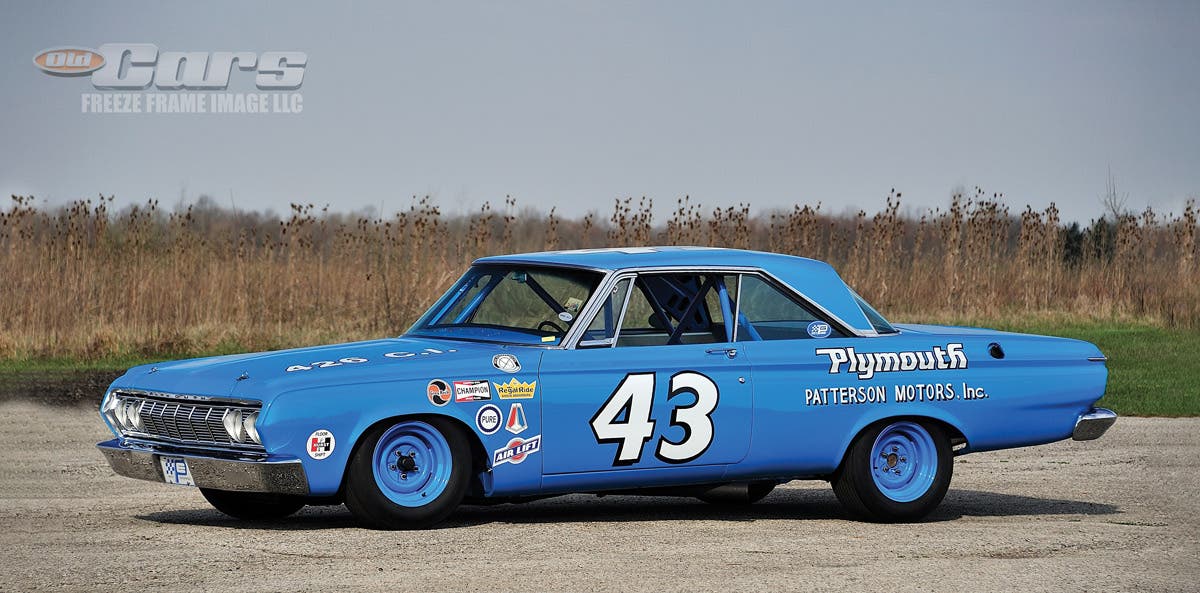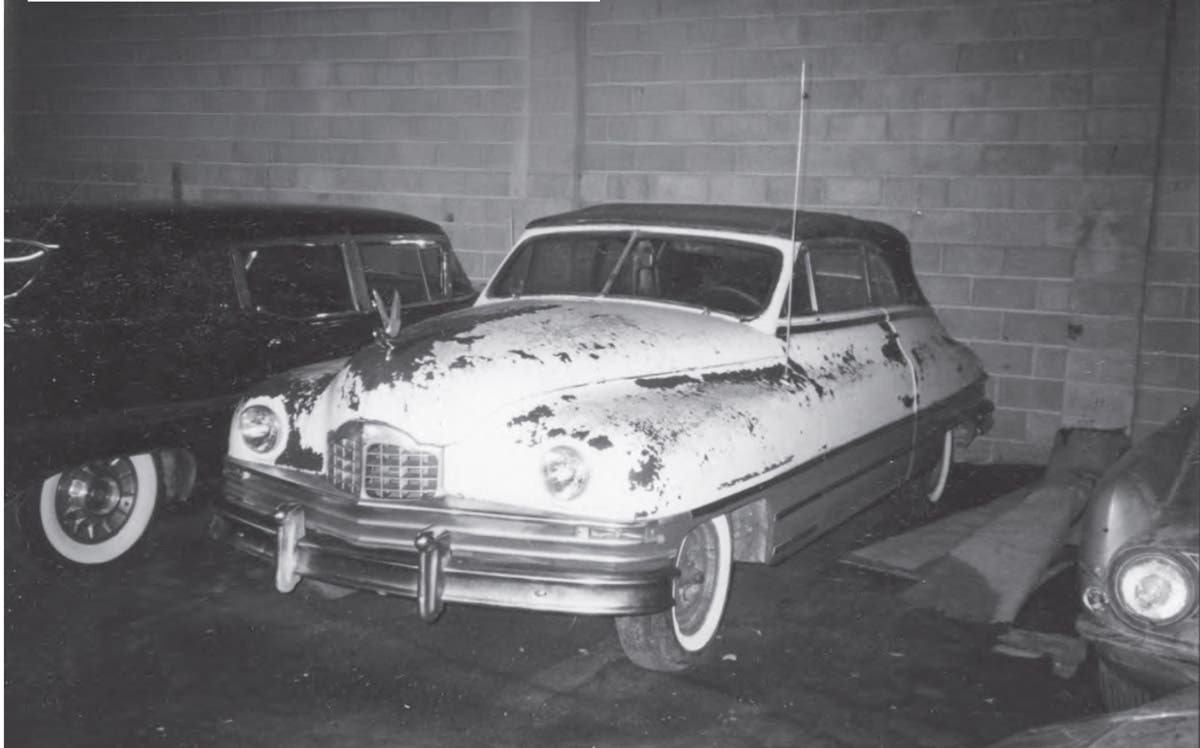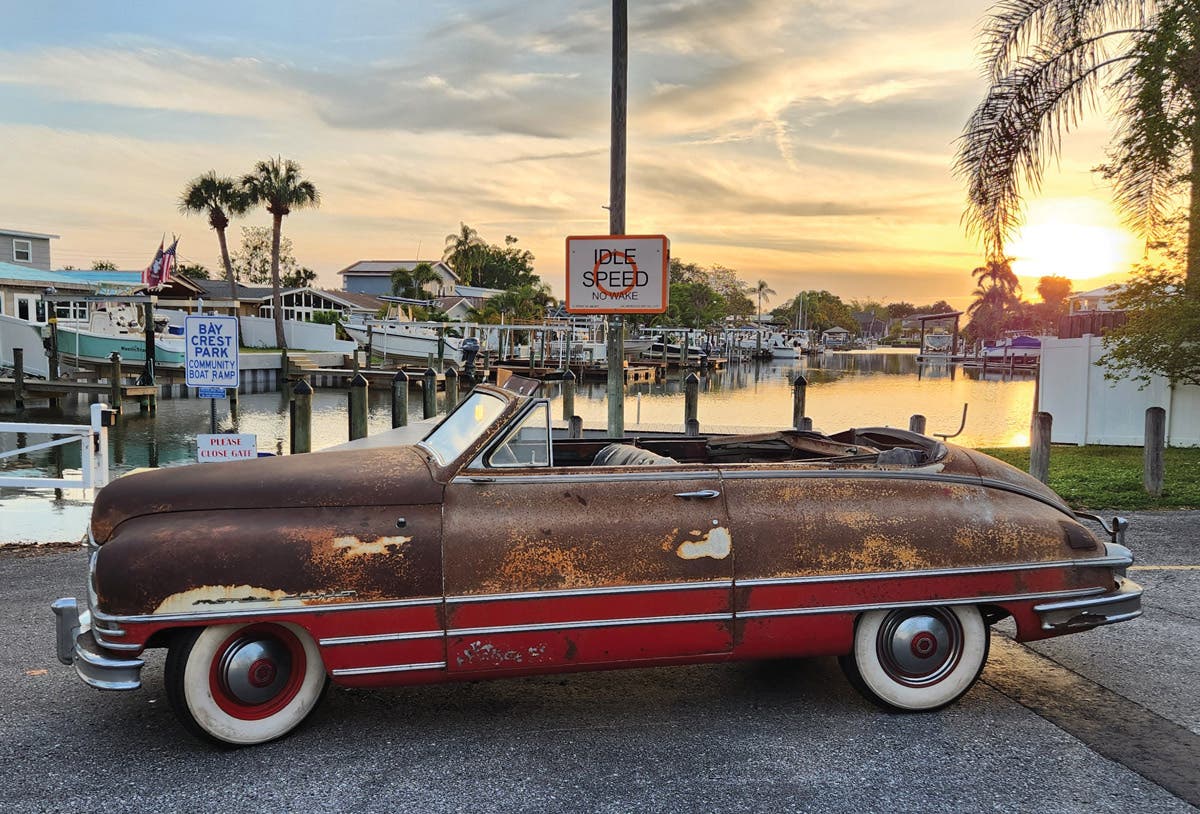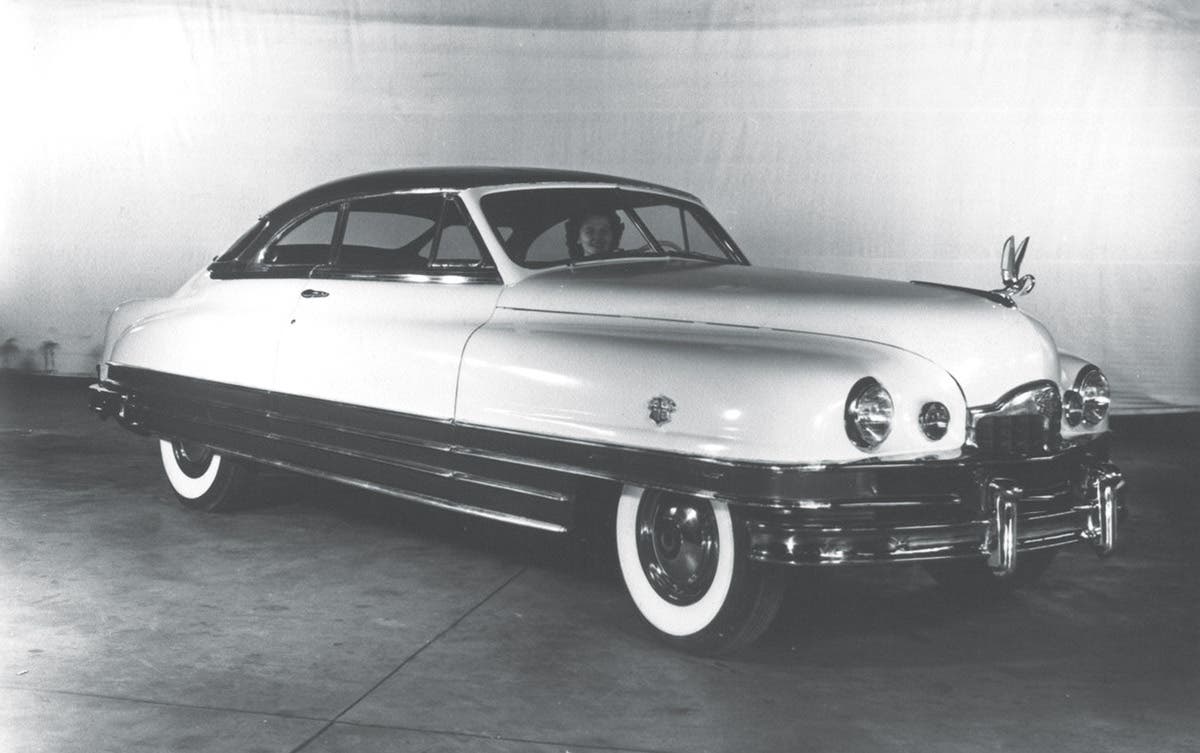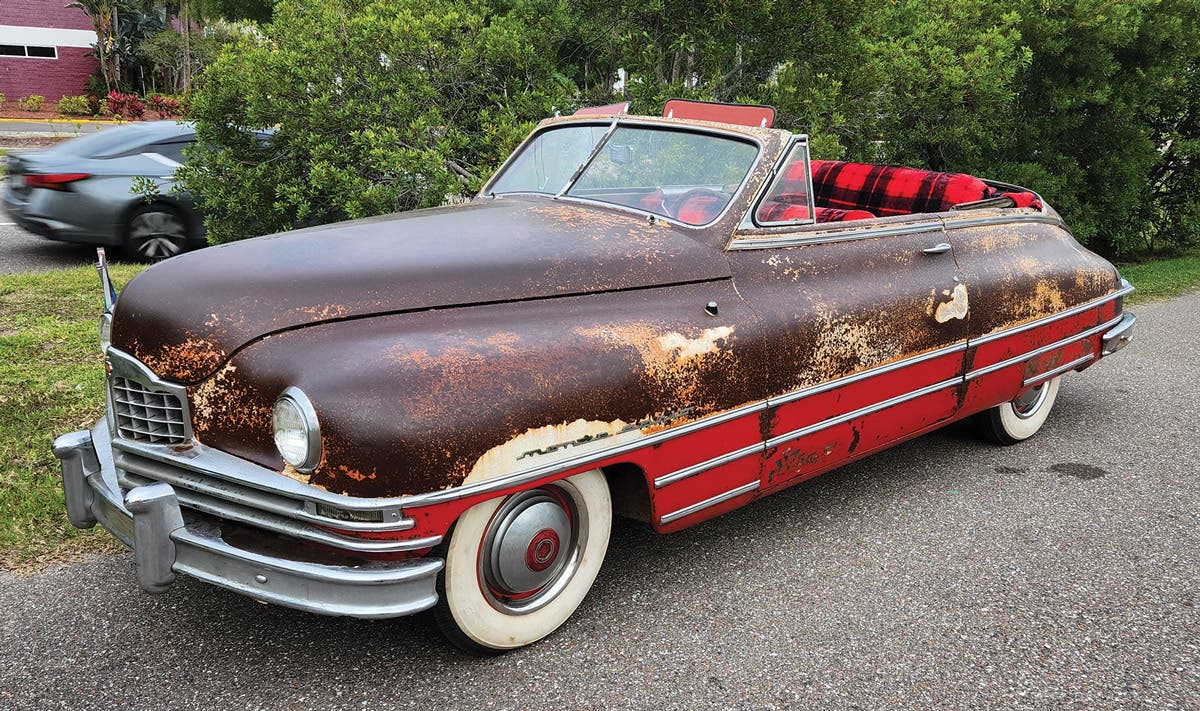Car of the Week: 1956 Chevrolet Corvette
47 years and counting! One owner will not rest until his 1956 Corvette is perfect.
Dick Miller was determined to make his “basket case” 1956 Corvette as nice as he could. And he didn’t really care how long it took.
It’s been about 47 years now, and Miller finally has his sweet roadster looking and running exactly the way he wants — well, almost.
“I still have a few things I want to address on it. I really want to do everything right,” says the Appleton, Wis., resident, of his stunning black-and-silver roadster. “I’ve always told everybody that I’m taking my time on this one and searching out all the best, proper parts and everything, because I always wanted this to be my best car.”
Miller has owned more Corvettes than he can count off the top of his head, and has four of them these days — including the ’56, ’57, ’58 trifecta. He has indeed made the ’56 into the most close-to-perfect in his fleet, and he did it with the most unlikely of restoration candidates.
“In 1977, the week before Christmas, I found it in Marion, N.C.,” he recalls. “I saw it in Vette Views magazine. The guy had it advertised as a body and rolling chassis with title. And that’s what I went down to answer to. At that time I had a black ’69 roadster. The year earlier I picked up a ’58 that I was working on already."
“Well, I took it down to the bare chassis, and started from scratch on everything. The front end was so bad I cut the whole thing off, but I saved the inner fender wells and a few things like that. I was pretty much looking for a project car, but that’s as deep as you go into a project [laughs]. The front end came off, the chassis got all redone and then one rear fender I had a replacement for. There were a number of things missing and I spent all those years hunting for parts I didn’t have.”
From all the history that Miller could gather, his ’56 had a fast a rowdy first few years, and then probably broke down. A long string of owners apparently wanted to restore the car, or at least get it running again, but it never happened until Miller came along with a long-range plan and a ton of patience.
“I traced owners back to the early ‘60s and it’s never been on the road [since then],” he says. “It was used and ridden hard when it was new. The odometer reads 19,000 and to my best [guess], I think that’s the correct mileage, because it’s been off the road since the early ‘60s. You go down in that area and they do a lot of hot-rodding and racing, and they buy a car to raise hell with. It was a sports car, it was something to play with, and that’s what they did. They used it!"
“It stayed within a 15-mile area all of its life. Everybody was going to fix it up and all they wound up doing is tearing more apart. The fixing up was never happening, all that was happening was it was deteriorating over the years from storage.”
1956: TURNING THE CORNER
The 1956 model year was a “fish or cut bait” time for General Motors and the future of its Corvette. After three years with meager production numbers and lukewarm success, the ‘Vette faced an uncertain future — there were plenty of rumors that it was on its way out after only 700 were produced for 1955.
When it came time to make a decision, the Chevy brass decided to soldier on with their two-seat sports car, no doubt taking notice of Ford’s belief in the similar blueprint with the introduction of its Thunderbird in ’55. Ultimately, the first three years of production were just enough to gain a little traction for the Corvette, and some redesign work and a few tweaks and upgrades in ’56 were just enough to get the model over the hump for good.
Chevrolet styling studio chief Clare MacKichan directed the 1956 redesign, which was somewhat inspired by the thrusting headlamps, and twin-bulge hood of the Mercedes-Benz 300SL gullwing coupe. There were new front fenders with chrome-rimmed headlights; roll-up glass windows; external door handles; chrome-outlined concave body coves and sloping, taillight-integrated rear fenders. The same basic grille styling was kept intact, but the grille teeth looked a bit slimmer. The dash layout remained the same as in the past. The rearview mirror, located at the center of the top of the dash, was now adjusted by using a thumbscrew.
Other changes included improved soft convertible tops, with power tops on the options list. A removable fiberglass hardtop was also available for buyers who weren’t fans of fabric tops. Amazingly, buyers would also get power windows and a signal-seeking Delco radio — all cutting edge stuff at the time.
Upholstery colors were limited to beige or red, but seven nitro-cellulose lacquer body colors were available: Onyx Black with silver panel; Polo White with a silver panel; Venetian Red with a beige panel; Cascade Green with a beige panel; Aztec Copper with a beige pane; Arctic Blue with a silver panel; and Inca Silver with an imperial ivory panel.
In the propulsion department, the six-cylinder was discontinued, replaced by a 265-cubic inch V-8 that produced 210 hp with the stock single four-barrel. A pair of twin-four barrel options could boost that figure to 225 or 240 hp. A three-speed manual was standard, and the two-speed Powerglide was optional. RPO No. 471 on the options list could get you a rear axle with a 3.27:1 ratio, while RPO No. 449 gave you the special high-lift camshaft.
It all added up to a better car all the way around than any of the first three editions, at least in the eyes of most critics. Karl Ludvingsen of Sports Car Illustrated put a loaded factory-fresh ‘Vette — chassis No. 1002 —through its paces and raved about it.
“Chances are that by the time you read this the '56 Corvette will have made a profound impression on the whole sports car world, and after having had one under me for a couple of days I will not be the last to be surprised,” he wrote. “This very early production model showed a willingness and ability to be driven fast and hard under almost all conditions and demonstrated an even greater potential for competitive use. In my opinion, the Corvette as it stands is fully as much a dual-purpose machine as the stock Jaguar, Triumph, or Austin-Healey. Without qualification, General Motors is now building a sports car.”
In the end, GM rolled out 3,467 1956 Corvettes — still a very modest total and the third-fewest of any model year. A year later that number nearly doubled, however, thanks in part to the lasting impression made by the ’56s, and the “Great American Sports Car” was on its way.
GOOD, BETTER, BEST
Miller pokes fun at himself over how long it took him to get his ’56 fully restored, but in his defense there were a few other projects along the way. He restored a ’57 Cadillac and a ’57 Corvette while the ’56 was still “in progress”. Add in the fact that the ’56 was missing an engine and a lot of other parts, and Miller’s refusal to cut any corners, and, well, the years started to pile up.
“I worked on the car since ’77 … but it was off and on,” he says. “Sometimes it just laid in the back corner of the garage in a pile of parts. I did the ’57 in between to be a driver. I did kind of a quick and sloppy job on that one, because I wanted to have it done and be able to cruise around in it. But this one I tried not to [compromise]. I did the best I could.”
Miller sought the help of a private local machine shop to help him with engine machining, while a local paint and body man — Chris Lindemuth, owner of Lindy’s Hot Rod Shop in Kaukauna, Wis. — did the spraying on the new coat of Onyx Black paint.
“I got all seems lined up and panels fitted before it went to body shop. For four months I put in about 40 hours a week sanding and priming and filling and sanding…to make everything turn out as decent as I could. A paint job is only as good as what’s underneath."
"It was a virgin motor that had 80,000 some thousand miles on it, but I had to hunt out a correct date code motor… The seats and upholstery were all done in my basement. I tried to keep everything original. The black-with-red combination is the way it was originally. We even re-sleeved the master cylinder to keep the original one."
“I did all the assembly. It was all a very long process… [The fall of 2022] was the first time it actually moved, and then I did more work on it through the winter. But [spring of ’23] was when it was finished.”
Since he owns Corvettes from three consecutive years, Miller can pretty much time travel back to the late 1950s whenever he wants. Sometimes, it’s a difficult choice deciding which ‘Vette to roll out the garage.
“Really, there’s only two things on the outside that you can [distinguish] a ’56 from a ’57. The ’56 has an adjustable rearview mirror with a thumb screw on the pedestal, and the ’57 its fixed. On the radio, the ’56 has a blank bar on top and starting in ’57 they all say ‘Wonderbar.’ Otherwise, you have to open the door and look at the serial number tag [laughs]."
“It’s funny, there was only 3,400 cars made in ’56, there was 6,100 cars in ’57. But the ’57 seems to draw more money, even though the rarity is more toward the ’56. And I personally like the ’56. I used to judge with Bloomington Gold and the NCRS and I like looking at the ‘56s because there are so many unique little tiny unique things on a ‘6 that people can’t substitute. The whole exhaust system is different on a ’56. And it was only the 265 in ’56. In ’57 they started with the 283.”
Suffice it to say, Miller’s black roadster lives a lot quieter life than it probably did originally in North Carolina. The 68-year-old ‘Vette takes to the road at a much more leisurely pace than in its first life.
“When you put your foot in and open up the four-barrel, for a little 265 it scoots pretty good,” he says. “ And it’s got the late-production Duntov cam I in it, and that Duntov cam takes it from 225 horse to 240 horse. So it does pretty good!”
One thing is for certain, Miller’s fascination with his beloved Corvettes has never waned, no matter how many different ones he’s owned. Some guys own a vintage Corvette for a while to impress some buddies, scratch an itch, or to medicate themselves during some midlife crisis. Miller is one of those die-hards that simply has Corvette DNA in his genes.
“It goes back to when I was growing up as a kid and seeing these things when they were new, and having a love for them,” he says. “At that time when you saw a Corvette, I mean, there weren’t five or six on the block. Everybody didn’t have a Corvette. It was a rare piece. “Everybody didn’t have four of them, like me!”
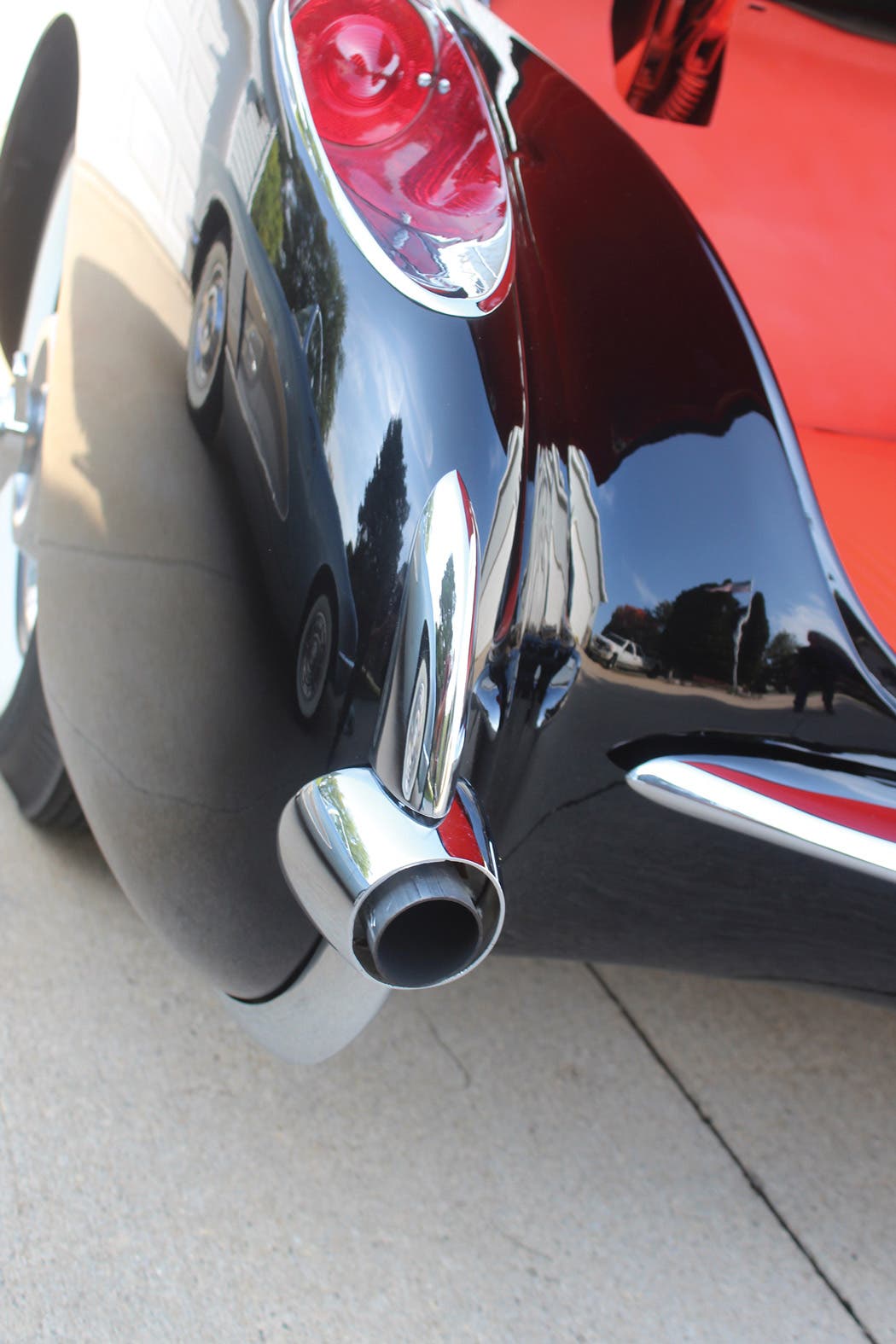
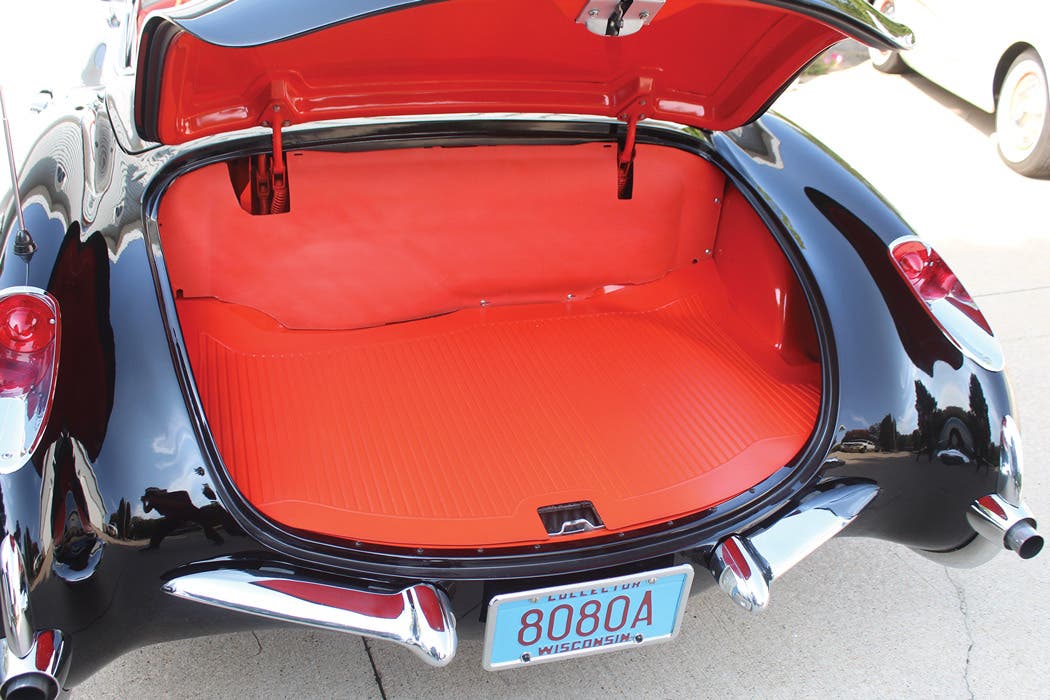
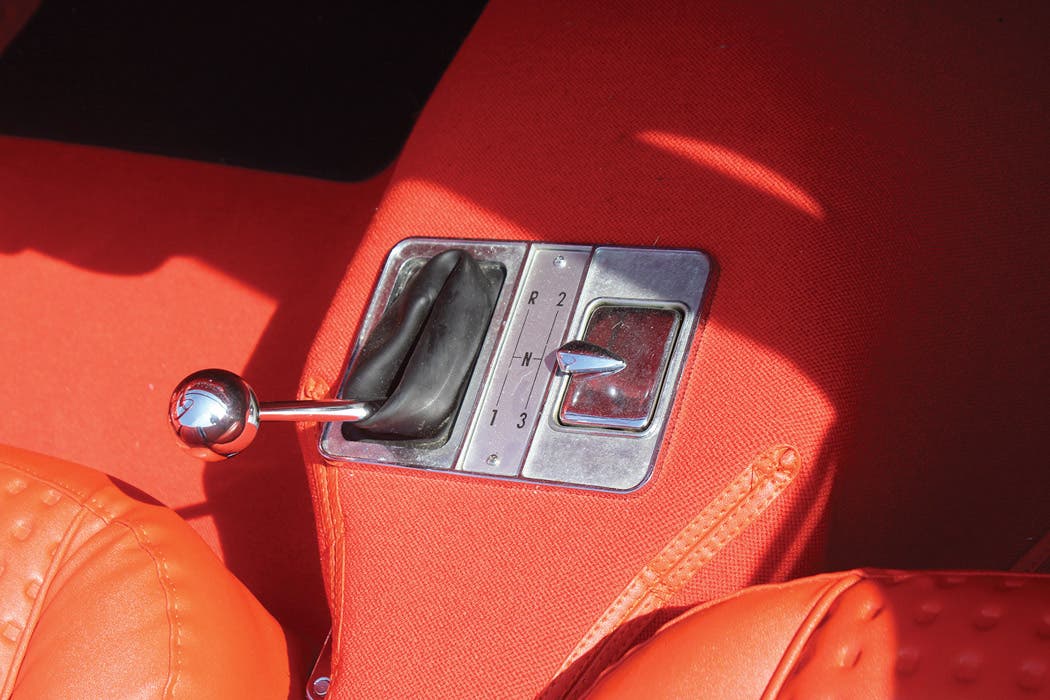
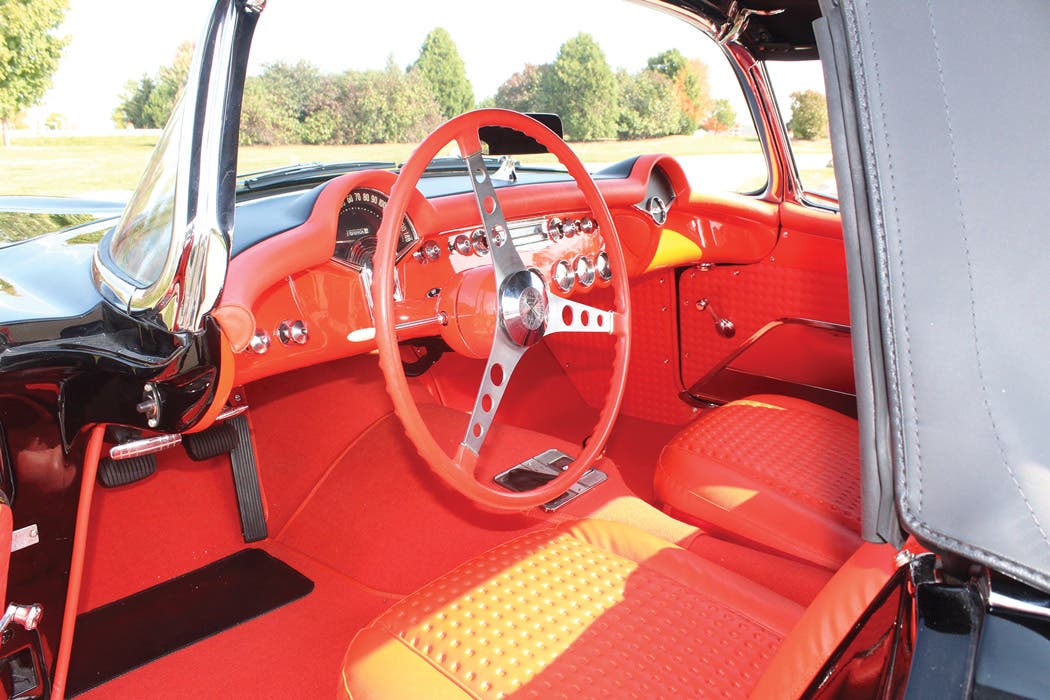
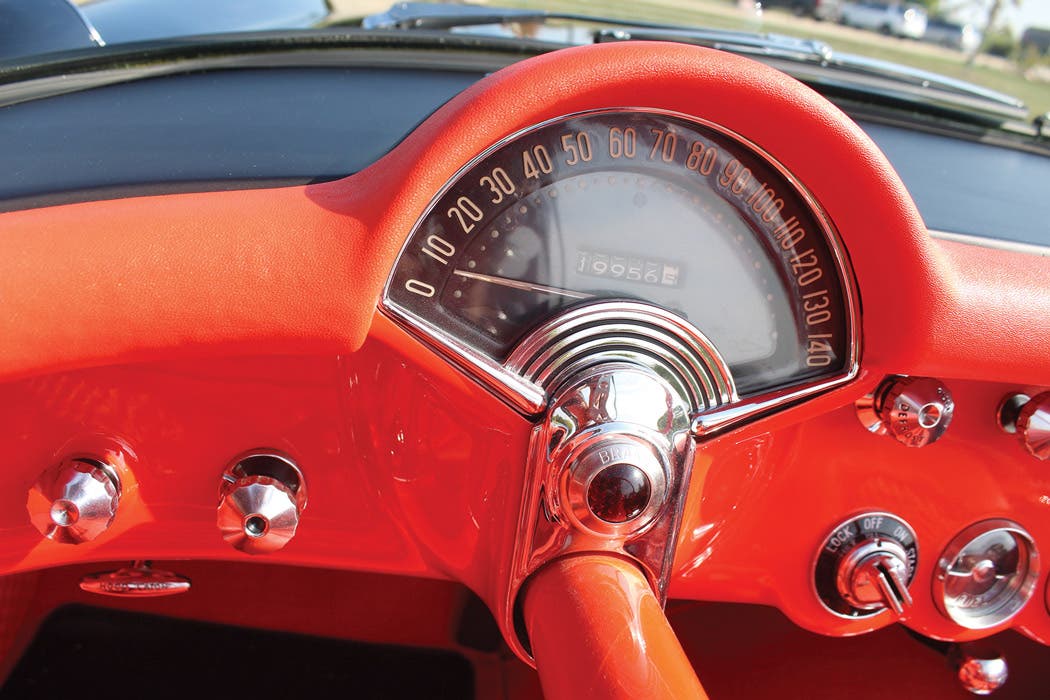
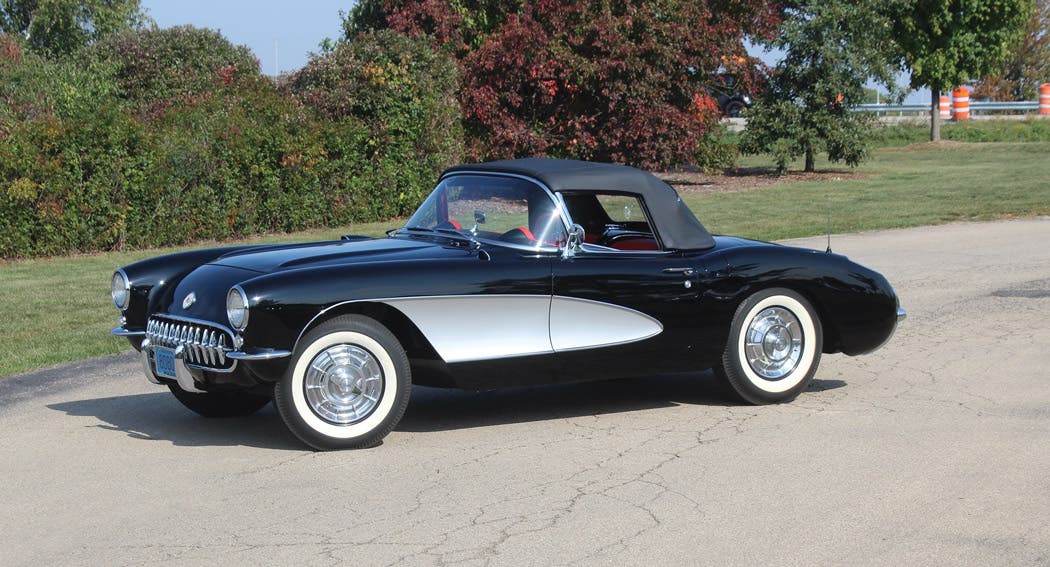
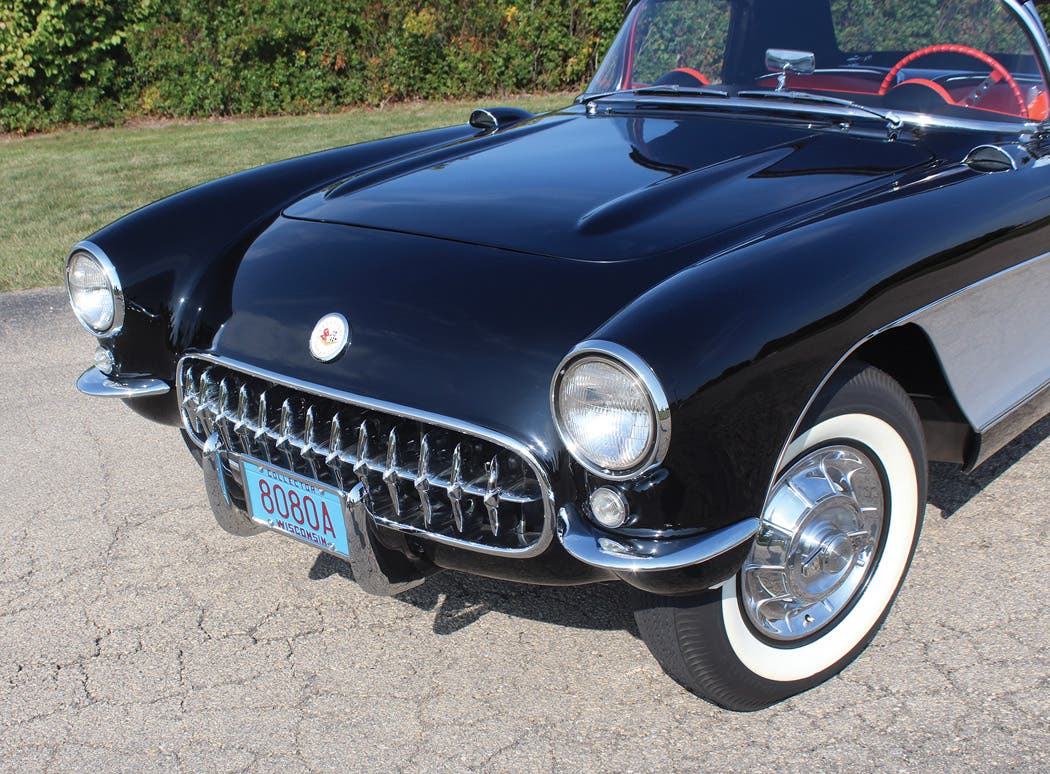
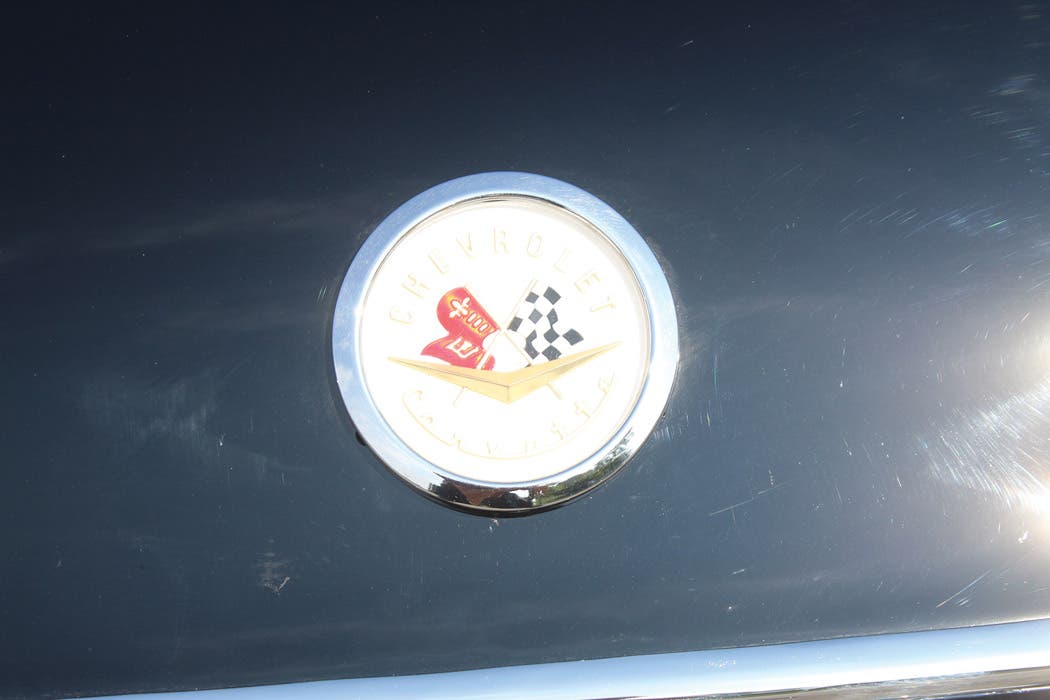

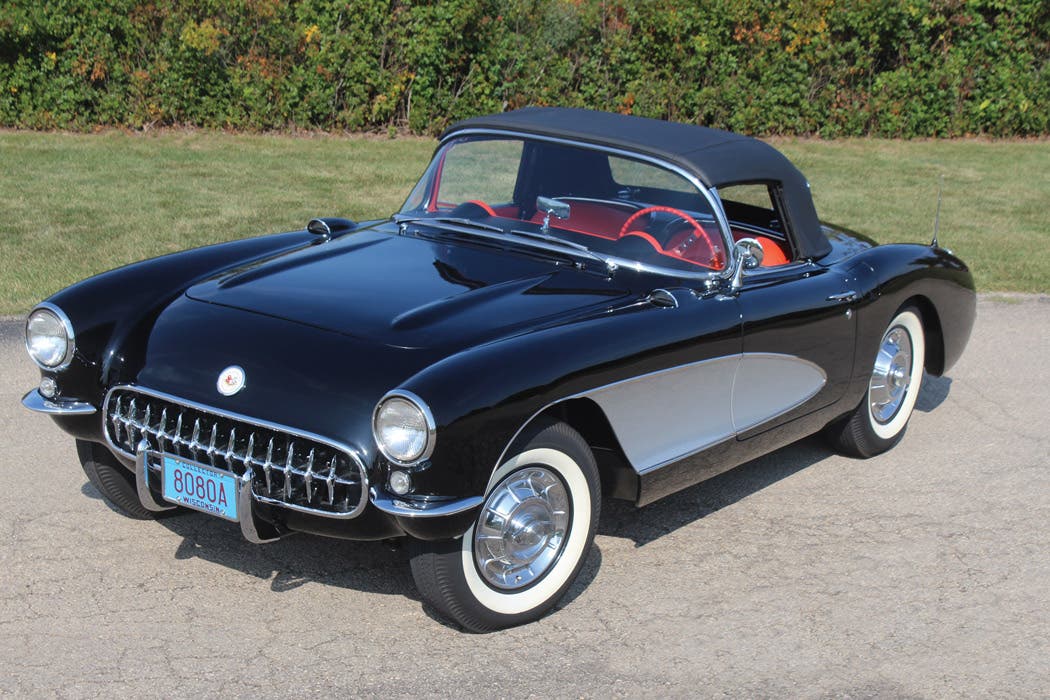
Love Corvettes? Check out a few more Corvette articles.
SHOW US YOUR WHEELS!
If you’ve got an old car you love, we want to hear about it. Email us at oldcars@aimmedia.com
Ever wonder what your classic ride is worth? Old Cars Price Guide is now online! Check it out and join to get the unbiased and real-world pricing on classic cars. You get pricing anytime, anyplace on your phone, tablet or computer.



